‘Borneo’. Just the name conjures scenes from BBC nature programs with Sir David Attenborough’s soothing voice narrating lush scenes of the life filled rain-forest. Yet here we were; no longer sitting watching a screen from our sofa but about to take our home into this mystical place.
Sailing up the Kumai river to the Tanjung Puting Reserve in the Indonesian part of Borneo, we were approaching one of the few safe havens for a mammal that shares 97% of its DNA with humans. A mammal which has such close resemblance to us that it’s name literally means ‘forest – person’ in both the Indonesian and Malay language. Unfortunately for the Orangutans being so closely related hasn’t stopped us destroying 80% of their habitat. Poaching, taking illegal pets and habitat destruction have more than halved Borneo orangutan numbers in the last century and left them endangered. The scale of this destruction hit us before we could even see Borneo. Huge barges pilled high with logs scattered the hazy horizon for 100’s of miles of our approach. Although the annual extensive, slash and burn fires stopped weeks ago a pollution haze leaves a thickness in the air and significant reduction in visibility.
Finding the orangutans in the forest requires us to leave Florence anchored in the main river by Kumai and take a local ‘klotok’ boat for the journey into the Tanjung Puting Reserve. Teaming up with long term sailors Nick and Sharon from the catamaran ‘Cheetah’ meant we would be in great company and share the cost of the trip. Spreading the distance over two days with one night aboard in the forest meant we would be able to take in the 3 main areas for observing Orangutans, yet only leave our own boats unattended for one night.

By 8.30am on day 1 we were winding our way up the river with someone else at the helm, depth readings, charts and possible obstructions no-longer our concern. Our only responsibly, spotting wildlife in the forest. Mangroves and river palms soon gave way to thick, green, towering forests as we progressed into the dense jungle. Monkey’s curiously watched us pass by and the sound of the forest started to became audible above the ‘klotok klotok’ of the engine.
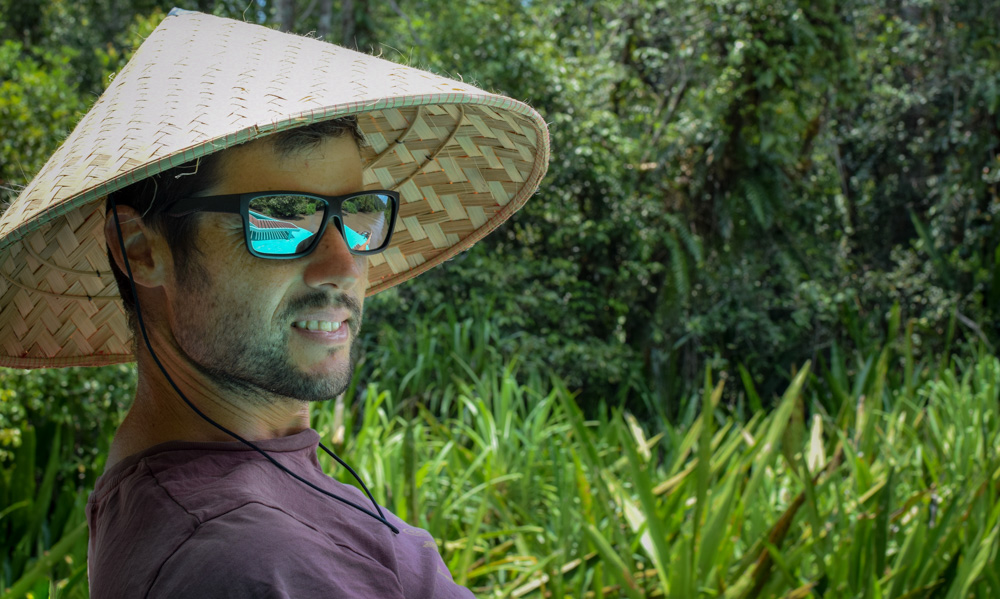
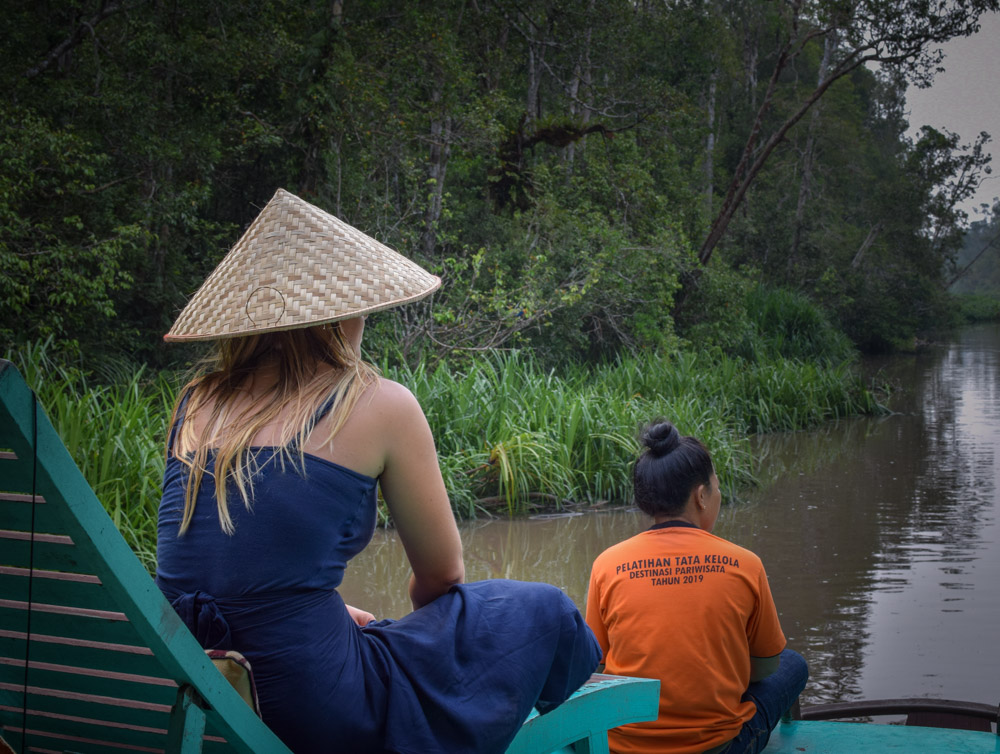


Four hours into the jungle brought us to the famous Camp Leaky. Back in 1971 Dr. Birute Galdikas established the camp as a base to study Orangutans, where it remains to this day; she started one of the longest continuous animal studies in history. Many rescued orangutans have been released here, mixing with wild orangutans as the area is not fenced. Once daily at a set time, the rangers place fruit on a platform further into the forest. The food is to supplement their diet when the orangutans are unable to get enough in the forest.
“If no orangutans come, although it will be sad for you not to see them, it is good as it means they are finding enough food in the wild” explained Mowardi our guide as we approached the small clearing.

Our silent anticipation of the rangers arriving was broken by rustling in the treetops. We weren’t the only ones waiting.

First on the platform was this cheeky gibbon, providing a class comedy act as he dashed across the platform, arms flailing.
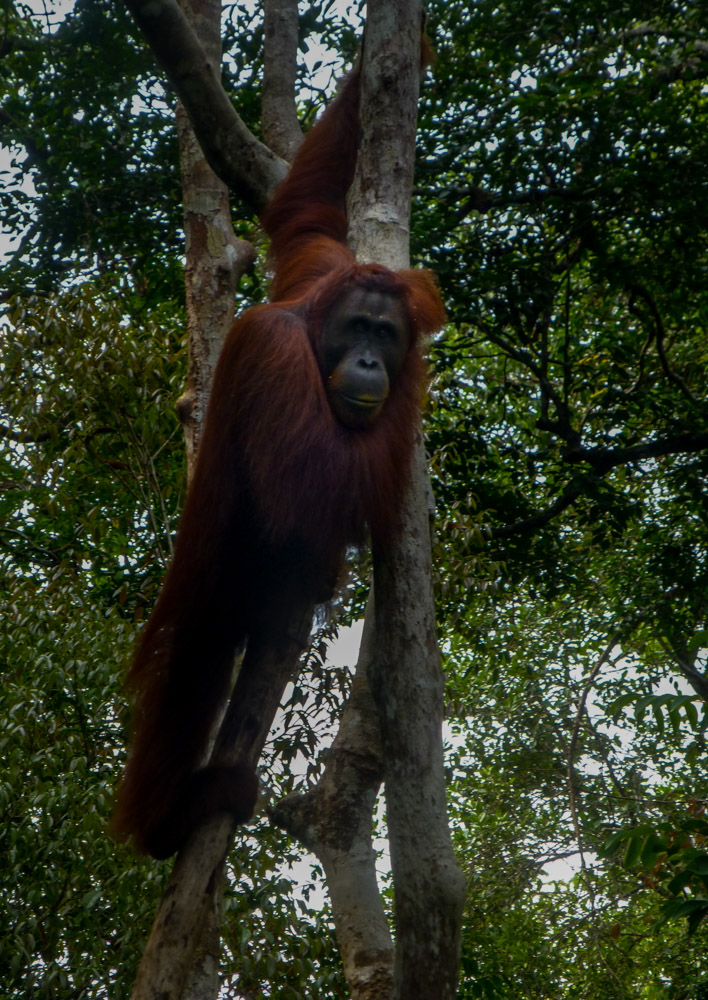
Seeing photos of orangutans is one thing, but nothing could have prepared us for witnessing their facial expressions, graceful movements between the trees and surprisingly gentle manner. Time flew by as we spent 2 hours spellbound by their mannerisms, interactions and unique personalities.
Then came the rain; a blessing, not only as a break from the heat, but an opportunity to watch the orangutans reaction to the weather. “Yes, now you can see how they make themselves umbrella’s from the big leaves like I told you” This was the moment we realised Mowardi’s enthusiastic tales of the orangutans human-like behaviors were all true.




Moored in the reeds as night fell, the sounds of the jungle stepped up a notch, a reminder that we are far from alone out here, in an environment that is anything but ‘ours’. With a park ranger as our spotter and Mowardi as translator, we set out into the pitch black night in search of a rare nocturnal monkey, the size of a large mouse.
Treading carefully to reduce noise and avoid the numerous scorpions, tarantula and poisonous centipedes the ranger spotted, we walked for a hour through the jungle. Just as we were giving up hope of finding the illusive monkey, the ranger gave a different call.

We were one of the lucky few who get to witness the Tiny Horsfield’s Tarsiers who at only 6″ long are very difficult to spot in the dark. They have the largest eyes in relation to their body of any mammal and can rotate their heads 180 degrees.
The following day was spent at two other feeding stations within the forest. Each location held an entirely different culture, seemingly set by the king or lack there of.






As night fell and we wound our way back down the river, fireflies twinkled in the mangroves; an enchanting end to what had been a magical experience.
As we sat back on Florence’s sofa replaying in our mind the real live documentary we had just witnessed, we were overcome by sorrow that that life is becoming increasingly difficult for the beautiful people of the forest.

How you can help save Orangutans and their homes
Cost of visiting the Orangutans in Kumai, Kalimantan
- We paid $2.1 million Indonesian rupiah (£116) per person for 2 days/1 night through Orangutan Voyages. This was the cheapest option we had found. As with most trips in Indonesia you can pay a lot more for very similar boats/service. The crew made the trip for us but most of them freelance and are not connected to a particular company. The only boats that looked more upmarket (nice seating, a four poster bed and we spotted them serving homemade cookies) carried the Borneo Eco Tours Branding (deluxe version). There are no prices on their website. If you have to ask….

Mowardi, our guide grew up in a forest village and has worked as a freelance guide in the park for 10 years. His enthusiasm, knowledge and love of nature really made the experience for us.
Ituy our wonderful cook not only kept us very well fed but spent the time when she was not cooking helping us to spot birds, crocodiles and monkeys.







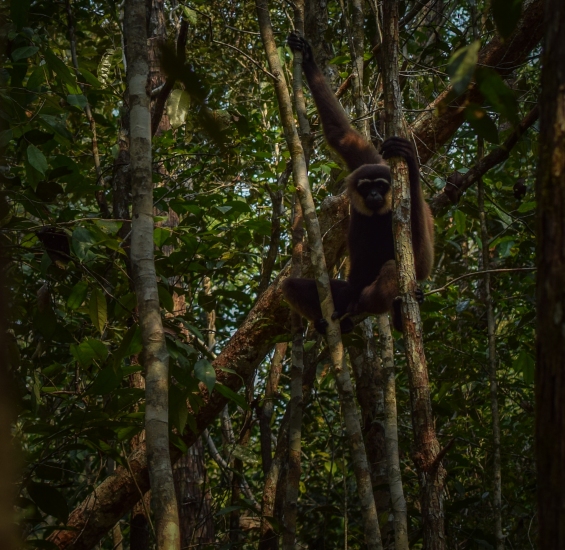





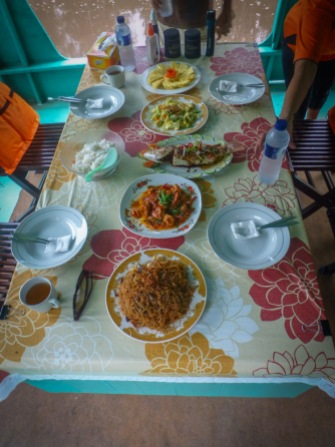
Very interesting to read of your experience in the jungle of Borneo! Thank you for sharing!
LikeLiked by 1 person
Thanks Elizabeth!
LikeLike
Golly, your getting so professional at this story telling. I was enthralled at your adventure and the description you put around it. Wonderful!
LikeLiked by 1 person
Thank you Frank! Glad you enjoyed it.
LikeLike
Magnificent travel story and capture. Honestly the smallest nocturnal primate called Tarsier is awesome! Bon Voyage.
LikeLiked by 1 person
Amazing travel log. Look forward to your future adventures.
LikeLike